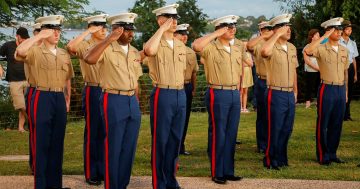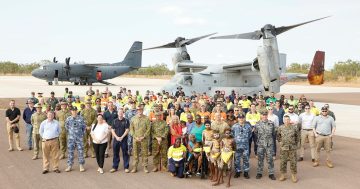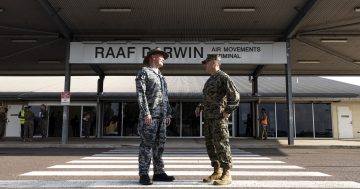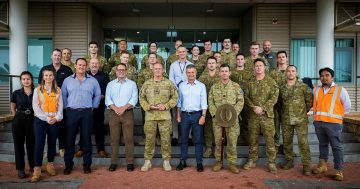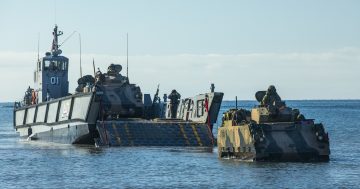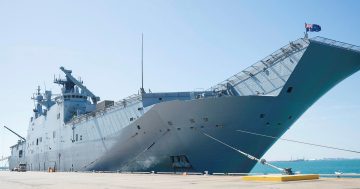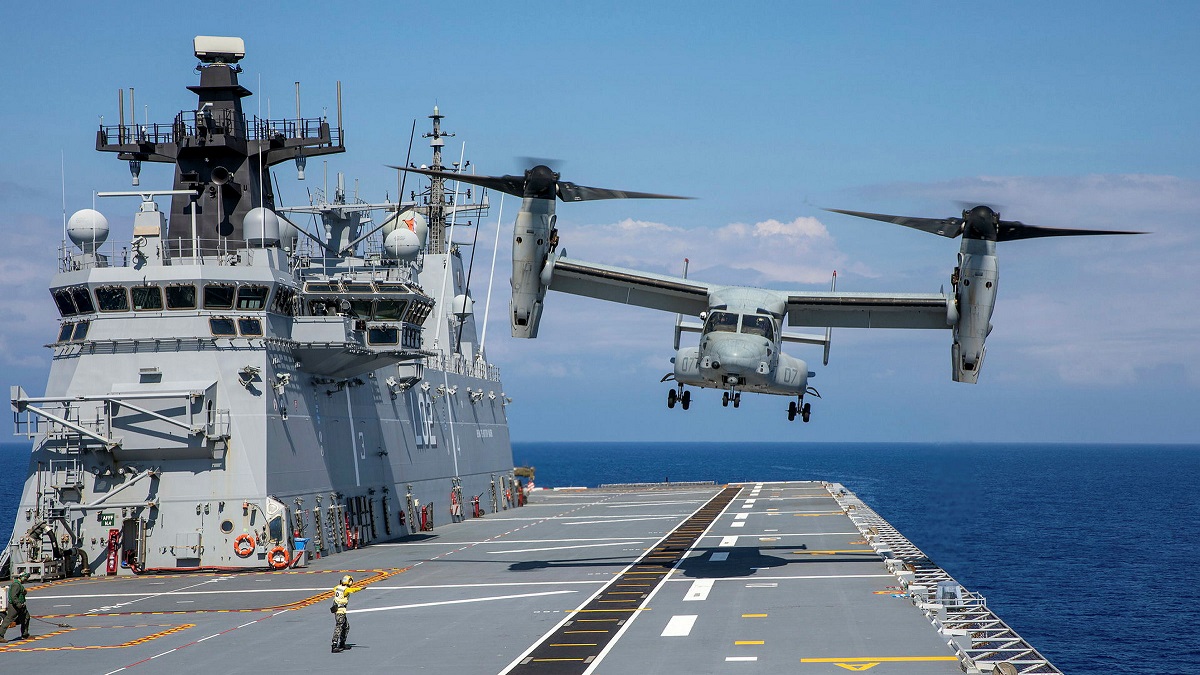
A USMC MV-22B Osprey takes off from the deck of HMAS Canberra in July. Photo: ADF.
Three US Marine Corps service personnel were killed on Sunday morning (27 August) when the MV-22B Osprey tiltrotor aircraft they were flying in crashed on Melville Island, part of the Tiwi Islands group north of Darwin.
The aircraft and personnel were operating in the Northern Territory as part of the Air Combat Element (ACE) of the Marine Rotational Force – Darwin (MRF-D), which deployed to Australia in late April. The annual MRF-D deployment is typically several months long and takes advantage of the NT’s mild winter weather and spacious training ranges and facilities.
The aircraft in question had 23 personnel on board when it crashed. Apart from the three deceased, five other personnel were airlifted to Royal Darwin Hospital in a serious condition. There were no Australian personnel on board the aircraft.
The MV-22B was participating in Exercise Predators Run – one of a number of exercises the MRF-D participates in while deployed to the NT – along with some 2500 personnel from the US, Australia, Philippines and Timor Leste.
“Our thoughts and deepest condolences are with the three US service personnel who lost their lives, those who have been injured, the rest of the crew and indeed the entire United States armed forces,” a joint statement from Prime Minister Anthony Albanese and Defence Minister Richard Marles reads.
Australian personnel frequently train with MV-22Bs, the most recent being last week’s Exercise Alon off the Philippines where MV-22Bs operated from ships, including the Royal Australian Navy’s HMAS Canberra, in an amphibious exercise with Japanese and Filipino forces.
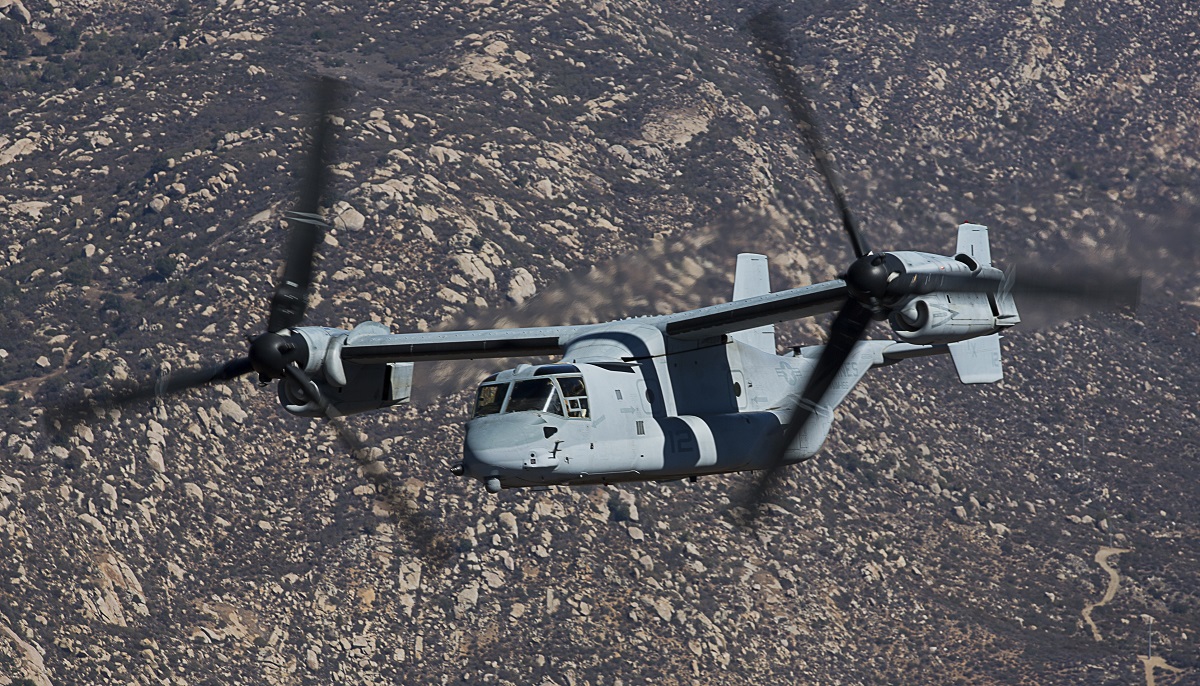
An MV-22B with its engine nacelles and propellors titled forward for horizontal flight. Photo: USMC.
The crash is the second involving an MV-22B in Australia, the first being in 2017 when, during Exercise Talisman Sabre off the Queensland coast, an Osprey carrying 26 personnel hit the deck of the US Navy’s amphibious ship USS Green Bay while landing. It was lost overboard and cost three lives.
The V-22 was designed and built in a joint venture between Bell Helicopter and Boeing. The aircraft entered operational service with the US Marine Corps and US Air Force in 2007 after a protracted development period through the 1990s and early 2000s. Around 450 Ospreys have been manufactured, including several for the Japan Self-Defense Forces (JSDF).
Compared to the helicopter it was designed to replace, the V-22 can carry a similar load at twice the speed and more than five times the range. It can carry up to 32 passengers and four crew or 9000 kg of cargo, can fly at more than 500 km/h and has a range of more than 1600 km.
There are three primary variants – the US Marine Corps’ MV-22B, which is the most common; the US Air Force’s CV-22, which is configured with additional sensors and gun positions for special operations support; and the US Navy’s CMV-22B, which is designed for the onboard delivery of passengers and freight to aircraft carriers at sea. The JSDF’s Ospreys are similar to the MV-22B.
The V-22’s unique attribute is its ability to take off and land like a helicopter from ships or small clearings and fly at high speed like a conventional aircraft. It does this by rotating its two wingtip-mounted engines and large propellors to transition from vertical to horizontal flight.
A shaft connects the two engines through the wing, so if one engine loses power, the power from the ‘good’ engine can be transferred between the two propellers to avoid an asymmetric loss of control.
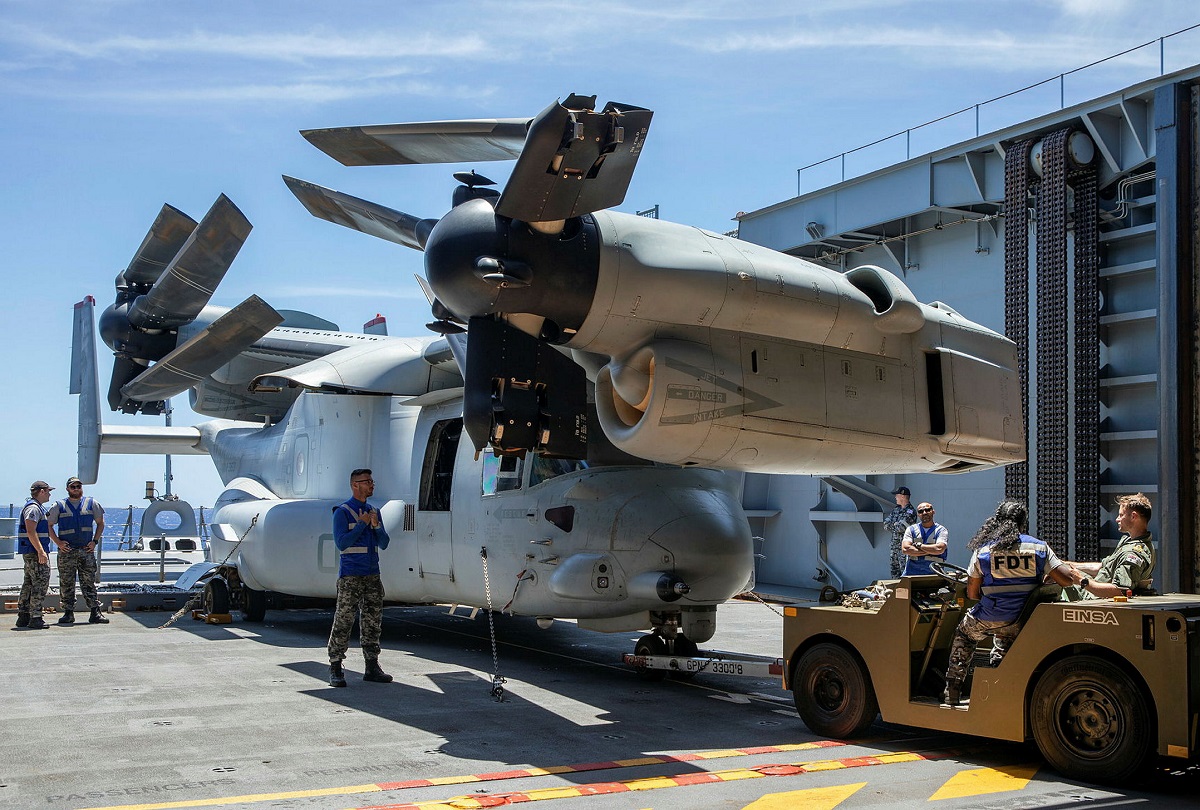
The MV-22 B’s complexity comes partly from having to have its wings and propellors folded up to fit in a ship’s hangar. Photo: ADF.
This already complex design is amplified by the MV-22 B’s requirement to be stored on a ship. This means its entire wing can be rotated 90 degrees parallel to the fuselage, and its large propellor blades can be folded to retain a similar deck or hangar storage footprint as the helicopters it was designed to replace.
The Osprey is also tricky to fly. Operators say it neither flies like a helicopter nor a conventional aeroplane and when landing, it has a range of unique aerodynamic tendencies that take some getting used to.
Two test aircraft were lost in the early 1990s due to manufacturing errors, while in 2000, a pre-production V-22 was lost following a high-rate descent due to a disrupted airflow phenomenon called vortex ring state (VRS) where a helicopter descends into its own downwash. This caused one wing to stall and the aircraft to roll over and crash, losing all 19 onboard.
In nearly 20 years of service, a total of 14 Ospreys have been lost in accidents, at least three of which appear to be linked to pilot error. By comparison, since the late 1960s, of the nearly 800 CH-53 Stallion/Sea Stallion helicopters produced for the US, Israel, Germany and other operators, 54 aircraft have crashed.
Original Article published by Andrew McLaughlin on Riotact.


